
Day 0: Tuesday, October 1, Kiligolf, Tanzania to Mida Creek Eco Camp, Kenya.
I had just spent two nights at home before I started the long drive to Mida Creek, Kenya on October 1, 2024. The drive was long and uneventful, but I was happy when I finally met my friends at Mida Creek Eco Lodge. I had lunch and took a walk down to Mida Creek just to see that the tide was in.
Some pictures from Day 0:

Just arrived at Mida Creek Eco Lodge

The tide was in.

Common Ringed Plover, Charadrius hiaticula
Day 1, Wednesday, October 2: Sabaki River Mouth to Dakatcha Woodlands.
This was only the second trip I used my newly purchased Landcruiser. I quickly realised it was not a Land Rover when I got stuck in the sand going out to the main road from the lodge. I had to call my guide to pick up my Norwegian friend. I was soon clear and we continued to Sabaki River Mouth. Here are some of the birds we registered: Namaqua Dove, Little Stint, Northern Red-fronted Tinkerbird, House Crow, Violet-breasted Sunbird, Golden Palm Weaver, Golden Pipit, Red-cheeked Cordon-bleu, Pale Flycatcher, Little Egret, Black-headed Heron and Coastal Cisticola. I again misjudged the capacity of the Landcruiser and got stuck in the sand. My Norwegian friend were not impressed and started complaining. I have been stuck before and with the help of some locals we were on our way to the Dakatcha Woodland after about 15 minutes. We stopped for lunch and picked up our local guide at a small village and continued to the Woodlands. Here are some of the birds we registered: Sombre Greenbul, Dodson´s Bulbul, African Palm Swift, Little Swift, Speckled Mousebird, Emerald-spotted Wood Dove, Red-billed Quelea, Red-billed Firefinch, Amethyst Sunbird, Pied Crow, African Pied Wagtail, Grey-headed Kingfisher, Northern Carmine Bee-eater, Rock Dove, Northern Fiscal, Black-crowned Tchagra, Malindi Pipit, Lilac-breasted Roller, Fork-tailed Drongo, Spur-winged Lapwing, Nubian Woodpecker, East Coast Boubou, Black-headed Oriole, Scaly-throated Honeyguide, Common Scimitarbill, Cardinal Woodpecker, Klaas´s Cuckoo, Green Wood Hoopoe, Collared Sunbird, Crowned Hornbill, Chestnut-fronted Helmetshrike, Yellow-rumped Tinkerbird, Brown-headed Parrot, Grey-backed Camaroptera, Wattled Starling. I could see that my Norwegian friend were struggling. He visited me in 2019 at 72 but were now 77 so I decided that I went back the long way for the car, while he and the guide took the shortcut back to the road. I picked them up and on the way out we added Crested and Coqui Francolin. We missed our main target Kilifi (Clarke´s) Weaver. We searched and searched, but could not locate a single one. Last time I was there in May 2024, we saw big flocks. We stopped at the local restaurant, had some local food before we drove to our lodge and retired early for the night.
Some pictures from Day 1:

Golden Pipit (Female), Tmetothylacus tenellus

Golden Pipit, Tmetothylacus tenellus

Malindi Pipit, Anthus melindae, Endemic to Coastal Kenya and Somalia
Day 2: Thursday, October 3: Arabuko Sokoke Forest and Mida Creek.
On the way to the lower gate of Arabuko Sokoke Forest, we found a Mangrove Kingfisher perched on a wire. Once inside the Forest, we started adding birds: Yellow-bellied Greenbul, Red-capped Robin-Chat, Eastern Nicator, Blue-mantled Crested Flycatcher, Spotted Ground Thrush (EA Lifer for me), Olive Sunbird, Lowland Tiny Greenbul, Black-backed Puffback, Chestnut-fronted Helmetshrike, Mombasa Woodpecker and a beautiful pair of Sokoke Scops-Owls. On the way out of the forest, we stopped at the Elephant drinking hole and in the wetland there registered the following species: African Sacred Ibis, African Spoonbill, Ethiopian Swallow, Grey Heron, Western Cattle Egret, African Jacana, Squacco Heron and Little Grebe. My friend needed better pictures of the Golden Palm Weaver so my guide took us to a hotel in Watamu where we got excellent pictures of both Eastern Golden and Golden Palm Weaver. We returned to our lodge and after lunch my friend needed some rest so I took a walk down to Mida Creek. Here are some of the species I recorded: Dimorphic Egret, Crab-plover, Gull-billed Tern, Little Stint, Western Osprey, Eurasian Whimbrell, Grey Plover, Common Sandpiper, Curlew Sandpiper and Yellow-billed Kite. We entered the forest again just before 17:00 and had spectacular views of Eastern Nicator, Sokoke Pipit and Narina Trogon. Other birds observed included Green Barbet and Ashy Flycatcher. We returned to camp, freshened up and had a nice dinner. Then we retired early to bed.
Some Pictures from Day 2:

Mangrove Kingfisher, Halcyon senegaloides

Red-capped Robin-Chat, Cossypha natalensis

Spotted Ground Thrush, Geokichla guttata

Chestnut-fronted Helmetshrike, Prionops scopifrons

Sokoke Scops Owl, Otus ireneae, Endemic to East Africa

Back after again finding the Sokoke Scops Owl

Eastern Golden Weaver, Ploceus subaurus
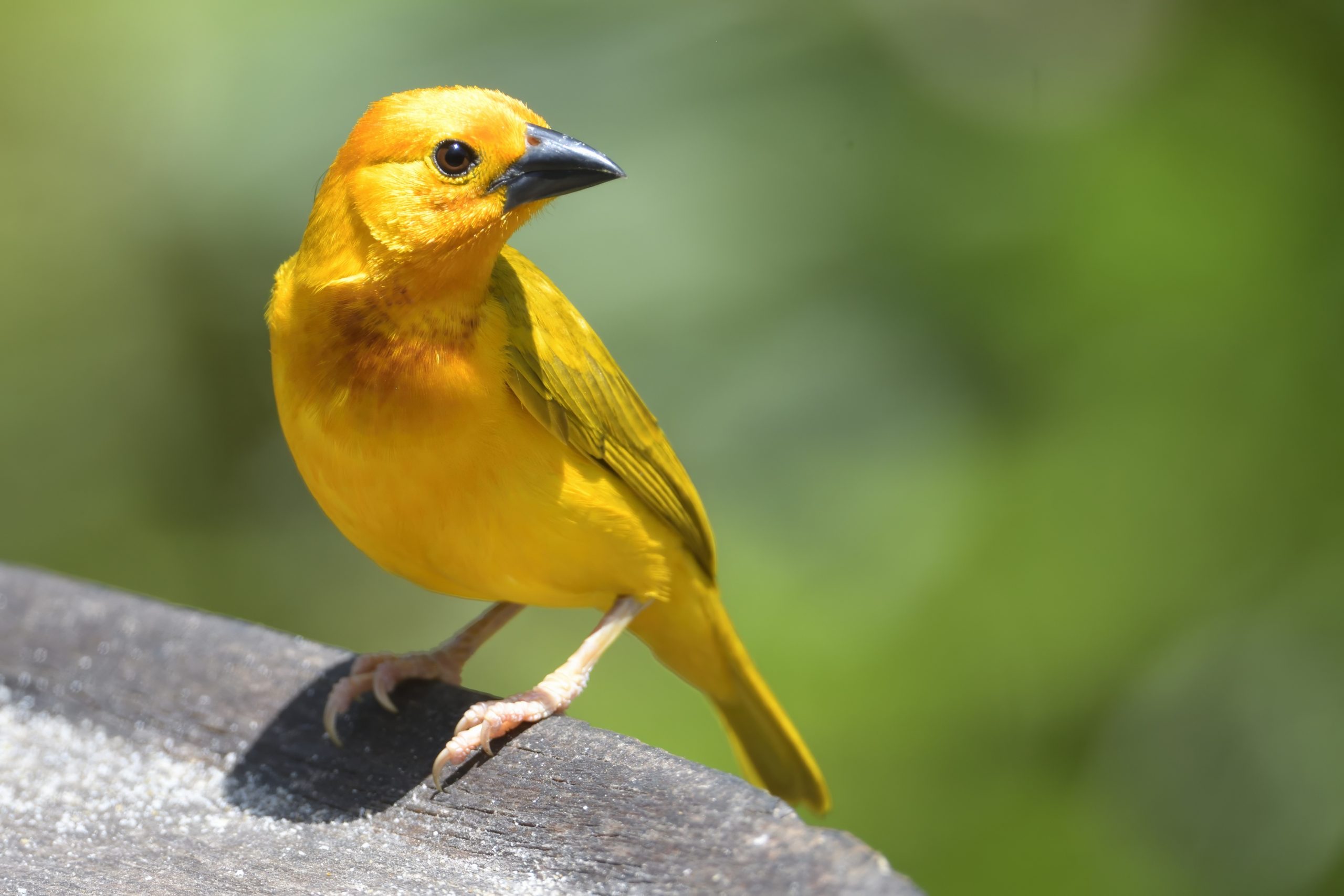
Golden Palm Weaver, Ploceus bojeri, Endemic to S Somalia and Kenya

Little Stint, Calidris minuta

Eastern Nicator (Juvenile), Nicator gularis, Endemic to SE Africa

Sokoke Pipit, Anthus sokokensis

Narina Trogon, Apaloderma narina
Day 3: Friday, October 4: Arabuko Sokoke Forest and Mida Creek.
We entered the forest early and started logging species: Fiery-necked Nightjar, Forest Batis, Fischer´s Greenbul, Black-headed Apalis, Spotted Ground Thrush (again), Black Sparrowhawk, Amani Sunbird, Green Malkoha, Little Yellow Flycatcher, Black-bellied Starling, Gorgeous Bushshrike, White-browed Coucal, Plain-backed Sunbird, Red-tailed Ant Thrush, Greater Honeyguide, African Woolly-necked Stork and Palm-nut Vulture. I also saw my first Caracal of EA that morning. We returned to camp and I took a walk down to Mida Creek and added Greater Sand Plover and Terek Sandpiper + got some good pictures of some of the normal birds. We went back into Arabuko Sokoke in the afternoon, but did not add anything new. We had dinner and retired early to bed.
Some pictures from Day 3:

Caracal, Caracal caracal

Common Greenshank, Tringa nebularia

African Sacred Ibis, Threskiornis aethiopicus

Crab-plover, Dromas ardeola

| Greater Sand Plover, Anarhynchus leschenaulti |

Grey Plover, Pluvialis squatarola

Three-banded Plover, Chardrius tricollaris

Terek Sandpiper, Xenus cinereus

Barn Swallow, Hirundo rustica

Gull-billed Tern, Gelochelidon nilotica

Eurasian Whimbrell, Numenius phaeopus
Day 4: Saturday, October 5: Mida Creek to Voi via Tsavo East
We had an early start since there is a long distance to the entrance to Tsavo East. We also had missed one bird that we needed to find on the way. We stopped at a place my guide knew and after some searching I actually found a flock of Scaly Babblers. These birds had eluded us both at Sabaki River Mouth and Arabuko Sokoke Forest. We entered the park without any problems, but I soon realised that the road were in a very bad condition and it would be tough on any car that drove as slow as we did. At any rate we got an impressive number of birds including: Martial Eagle, Black-headed Lapwing, Violet-backed Starling, Fischer´s Starling, White-headed Buffalo Weaver, Von der Decken´s Hornbill, Eastern Yellow-billed Hornbill, African Silverbill, Northern Grey-headed Sparrow, Pink-breasted Lark, Black-faced Sandgrouse, Eastern Chanting Goshawk, Northern White-crowned Shrike, Somali Bee-eater, Taita Fiscal, Northern Red-billed Hornbill, Red-billed Buffalo Weaver, Chestnut-headed Sparrow-Lark, Bateleur, Buff-crested Bustard, Brubru, Blue-capped Cordon-bleu, Somali Bunting, Fischer´s Sparrow-Lark, Pygmy Falcon, Superb Starling, Tawny Eagle, Black-winged Kite, Green-winged Pytilia, Blue-naped Mousebird, Common Ostrich, Western Yellow Wagtail, African Grey Flycatcher, Pygmy Batis, Northern Crombec, Vulturine Guineafowl, Somali Courser, Egyptian Vulture (Lifer), Black-winged Stilt, Red-winged Lark, Crowned Lapwing, Yellow-necked Spurfowl, White-bellied Bustard, Egyptian Goose, Isabelline Wheatear, Kori Bustard, Crested Francolin, White-browed Sparrow-Weaver and Bare-eyed Thrush. We had now reached Voi and we drove and checked in to the hotel, got some food and retired early to bed.
Some pictures from Day 4:

Scaly Babbler, Turdoides squamulata, Localised Endemic to NE Africa

Black-headed Lapwing, Vanellus tectus

Pink-breasted Lark, Calendulauda poecilosterna, Endemic to NE Africa

Gerenuk, Litocranius walleri, Endemic to East Africa

Black-faced Sandgrouse, Pterocles decoratus, Endemic to NE Africa

Olive Grass Snake, Psammophis mossambicus

Somali Bee-eater, Merops revoilii, Endemic to E Africa

Chestnut-headed Sparrow-Lark, Eremopterix signatus, Endemic to NE Africa

Somali Courser, Cursorius somalensis, Endemic to NE Africa

Egyptian Vulture, Neophron percnopterus – LIFER

Buff-crested Bustard, Lophotis gindiana, Endemic to NE Africa

Bateleur, Terathopius ecaudatus

Taita Fiscal, Lanius dorsalis, Endemic to NE Africa

White-bellied Bustard, Eupoditis senegalensis

Tawny Eagle (Pale Morph), Aquila rapax

Kori Bustard, Ardeotis kori
Day 5; Sunday, October 6: Voi via Tausa Eco Lodge to Nairobi
We started early and when we reached Tausa Eco Lodge, I discovered that some bolts in one of the rear wheel were broken. A direct effect of the terrible roads in Tsavo East. I just did a little bit of birding before I went to try to find a mechanic. Here are some of the birds I observed D´Arnaud´s Barbet, Tropical Boubou, Slate-coloured Boubou and Fischer´s Starling. I picked up the guys. They had found their target bird Red-naped Bushshrike. We stopped at a local town, found a mechanic to fix the bolts. Of course I were overcharged and they did a terrible job. We continued to my normal hotel in Nairobi, Hotel Troy. We had a nice meal and retired early to bed.
One Picture from Day 5

Fischer´s Starling, Lamprotornis fischeri, Endemic to NE Africa
Day 6: Monday, October 7: Nairobi National Park
I had made an agreement to meet with my friend Adam Scott Kennedy to join us in the park that day. We met Adam and were ready to enter the park when a park official decided that I were driving a Safari vehicle. I tried to explain and show him the papers that the vehicle bolnged to me and it were a private car. I aslo told him that we had no problems in Tsavo East. Well, if a person with a uniform have decided on something even if it was wrong, there are no way you can persuade him. My guide managed to get hold of another car with a driver so we eventually managed to enter the park and had a fantastic day. My Norwegian friend were very grumpy and blamed me for not checking. I told him I had been in the park plenty of times with my private vehicles. Adam suspected it had something to do with a conflict between Tanzania and Kenya. While we waited for the other driver we birded a little at the entrance gate and got some good birds including: Speke´s Weaver, Village Weaver, Northern Double-collared Sunbird, Hartlaub´s Turaco, White-headed Barbet, White-eyed Slaty Flycatcher and the kikuyuensis race of Green-capped Eremomela. The driver arrived and we entered the park just before 10:00 nearly 3 hours delayed. My Norwegian friend again complained that we missed the morning birding, but it turned out to be a fantastic day. The only problem were that he had forgotten a spare battery to his camera and despite my warning about not looking at the back of the camera he did and eventually ran out of battery. Since I had 2 cameras, I lent him one of mine, a Nikon D850 with a 600mm F4 and a 1.4X converter (850mm). It soon became annoying that he had no clue of what his target birds were, he missed a few lifers while he were busy photographing common birds. At any rate we had a fantastic day in the park. Here are some of the birds we registered: Chinspot Batis, Variable Sunbird, Red-faced Cisticola, Green Sandpiper, Malachite Kingfisher, African Darter, Blacksmith Lapwing, Winding Cisticola, White-breasted Cormorant, Helmeted Guineafowl, African Fish Eagle, Kenya Sparrow, Banded Martin, Red-throated Rock Martin, Brown-throated Martin, Scarlet-chested Sunbird, Bronze Mannikin, Northern Pied Babbler, Yellow-billed Oxpecker, Wood Sandpiper, Long-toed Lapwing, Dusky Turtle Dove, Laughing Dove, White-winged Widowbird, Reichenow´s Seedeater, Sentinel Lark, Common Waxbill, Little Bee-eater, Cardinal Quelea, Moustached Grass Warbler, Singing Cisticola, Vitelline Masked Weaver, Spot-flanked Barbet, Purple Grenadier, Long-tailed Fiscal, Yellow-throated Longclaw, Dark-capped Bulbul, Spectackled Weaver, Augur Buzzard, White-bellied Tit, Marabou Stork, Martial Eagle, Rattling Cisticola, White-browed Scrub Robin and African Rail (Heard only). We had now reached our Breakfast/Lunch stop. The place were teaming with birds, so we hardly had time to eat: Hildebrandt´s Starling, Grey-capped Warbler, Holub´s Golden Weaver, Red-throated Tit, Superb Starling, Spotted Palm Thrush and Buff-bellied Warbler. We started driving again around 13:00 and continued to pick up good birds: Croaking Cisticola, Rüppel´s Robin-Chat, Cape Robin-Chat, African Citril, Brimstone Canary, Yellow-breasted Apalis, Crimson-rumped Waxbill, Jackson´s Widowbird, Red-billed Oxpecker, Yellow Bishop, Common Ostrich, White-bellied Go-away-bird, Pangani Longclaw, African Red-rumped Swallow, Brown-crowned Tchagra, Cinnamon-breasted Bunting, Grey Heron, Great Egret, Intermediate Egret, Northern Wheatear, Pectoral-patched Cisticola, Shelley´s Francolin, Rosy-throated Longclaw, Red-cowled Widowbird, Bronze Sunbird, Kikuyu White-eye, Brown-backed Woodpecker and Pale White-eye. We exited the park at around 18:00 and bid our farewell to Adam who we can thank for the great success. We arrived at the hotel and I heard a Montane Nightjar singing outside the wall. We freshened up and had a lovely dinner. My friend Peter Boesman from Belgium arrived late that night. He were going to join us for the central and western part of Kenya, before we would drop off my Norwegian friend in Nairobi and Peter, my guide and I would continue to the coast. It were my Norwegian friend that had booked the trip. He is a bird photographer. Peter is a well known bird call recorder and is the one with most recorded species world wide. I had warned my Norwegian friend, but in his eagerness to save a few USD, he decided to let Peter join us. That turned out to be a big mistake.
Some pictures from Day 6:

Green-capped Eremomela, Eremomela scotops, race Kikuyuensis
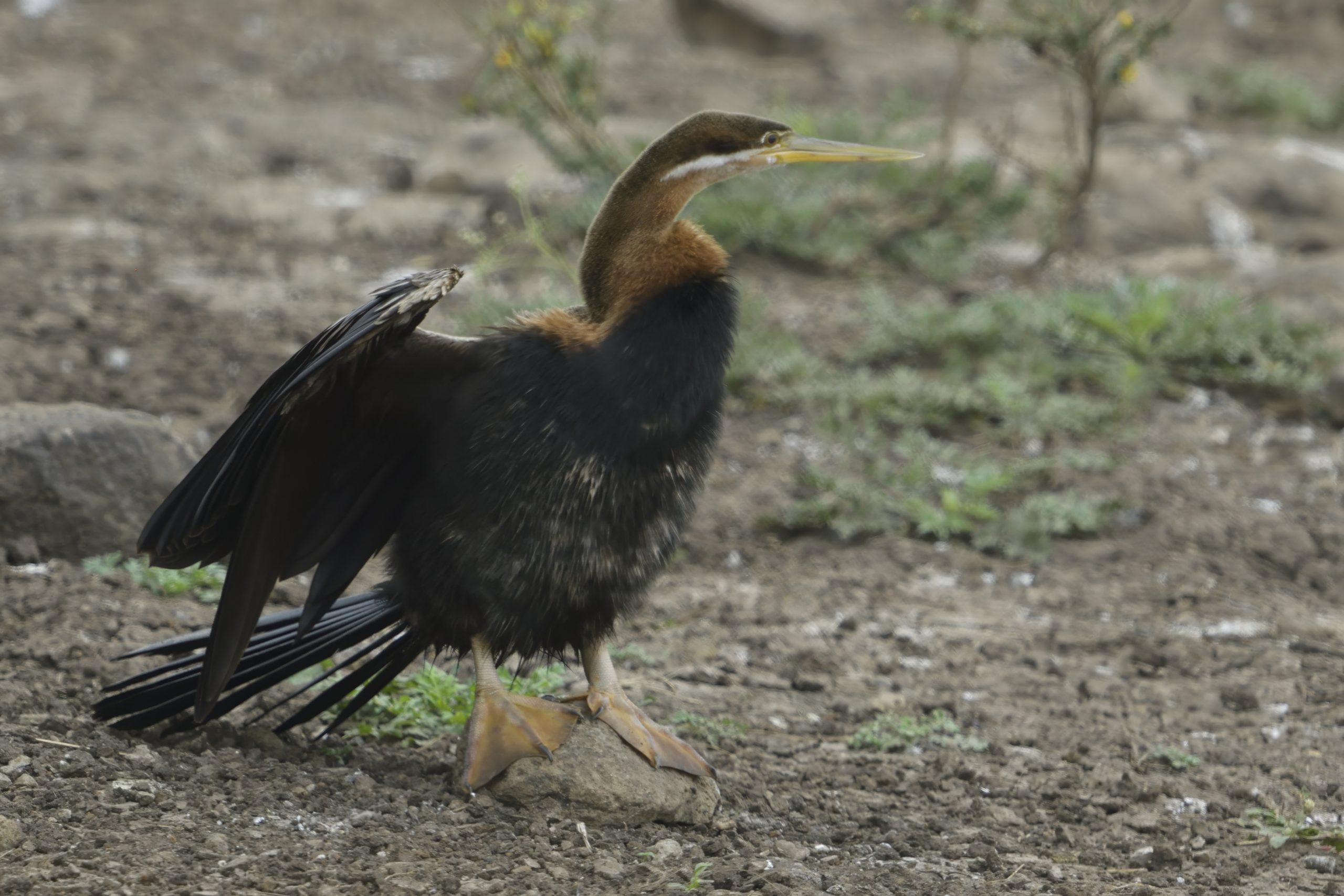
African Darter, Anhinga rufa

Kenya Sparrow, Passer rufocinctus, Endemic to Kenya and Tanzania

Serval, Leptailurus serval

Winding Cisticola, Cisticola marginatus
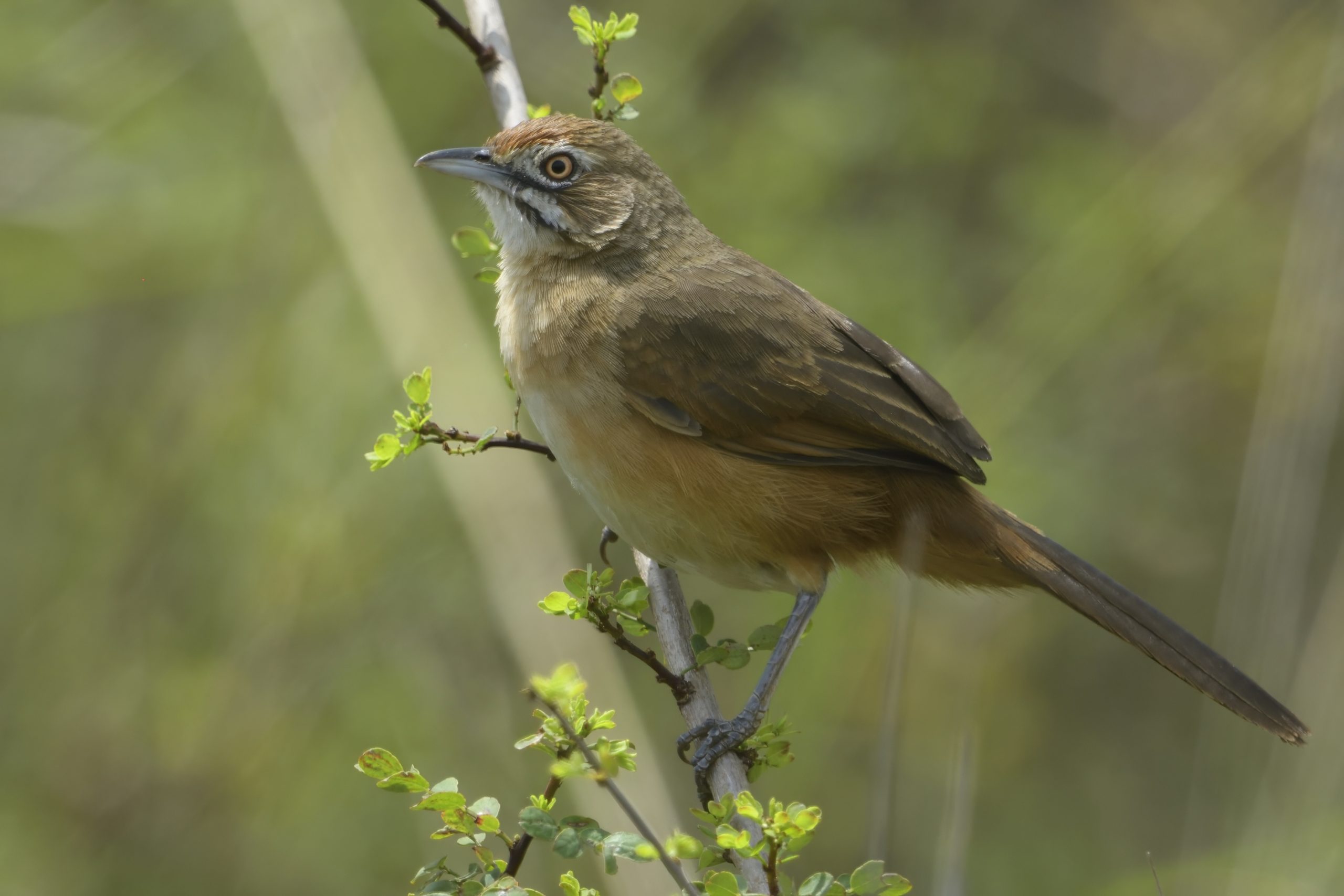
Moustached Grass Warbler, Melocichla mentalis

African Yellow Warbler, Iduna natalensis

Yellow-throated Longclaw, Macronyx croceus

Speckled Mousebird, Colius striatus
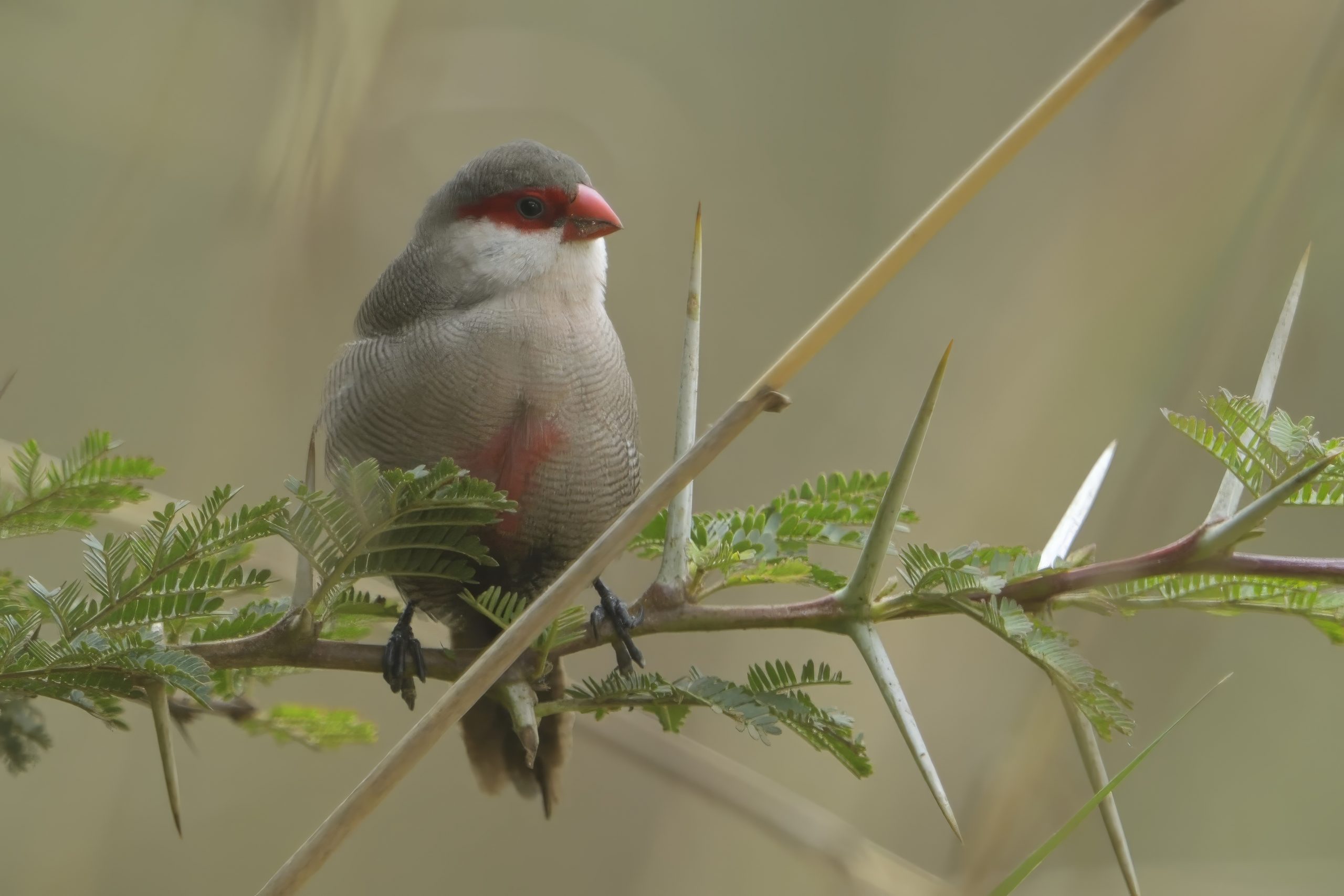
Common Waxbill, Estrilda astrild

Dusky Turtle Dove, Streptopelia lugens

Sentinel Lark, Corypha athi, Endemic to NE Africa

Little Bee-eater, Merops pusillus

Holubs Golden Weaver, Ploceus xanthops

Grey-capped Warbler, Eminia lepida

Red-throated Tit, Maliniparus fringillinus, Endemic to N Tanzania and S Kenya

Pangani Longclaw, Macronyx aurantiigula, Endemic to NE Africa
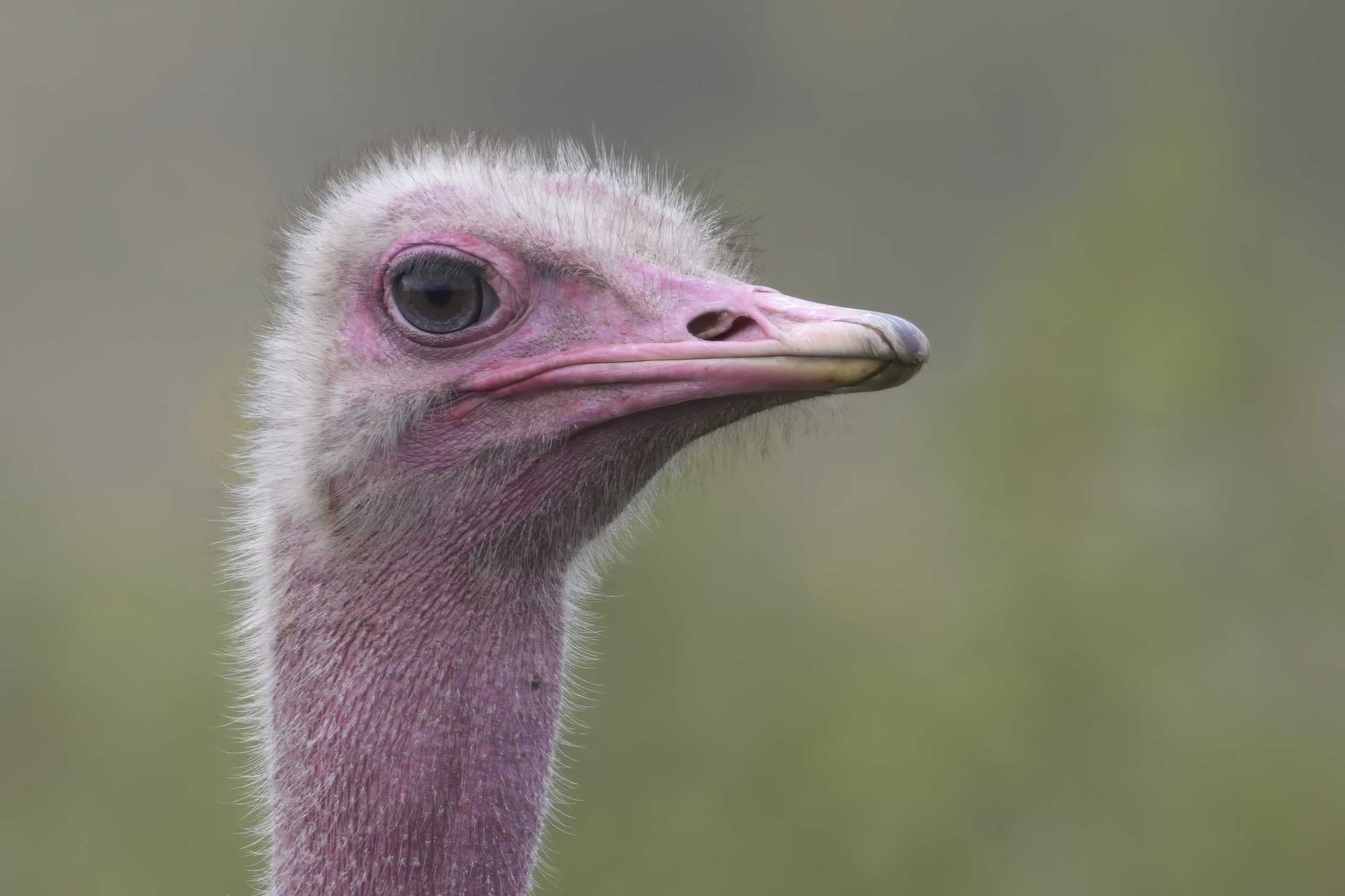
Common Ostrich, Struthio camelus

Yellow-billed Egret, Ardea brachyrhyncha

Yellow-necked Spurfowl, Pternistis leucoscepus, Endemic to NE Africa

Pectoral-patched Cisticola, Cisticola brunnescens

Shelley´s Francolin, Scleroptila shelleyi

Rosy-throated Longclaw, Macronyx ameliae

Reed Cormorant, Microcarbo africanus

Long-toed Lapwing, Vanellus crassirostris

Brown-backed Woodpecker, Dendropicos obsoletus
Day 7: Tuesday, October 8: Nairobi via Sagana to Castle Forest
We left Nairobi early to avoid the morning rush. We were soon at our normal spot for Hinde´s Babbler, but the area were totally burned out. Our guide had another spot near by, so we entered there and soon found The Babblers. This is where the conflict between the photographer and recorder started. A surprise bird for me in the area were Black-bellied Sunbird. Other birds encountered included: Eastern Violet-backed Sunbird, Grey-headed Bushshrike and Grey-headed Kingfisher. We continued to Castle Forest Lodge. My friends opted to pay extra for a room instead of staying in a tent as is included in the rate. Here are some of the birds we recorded the first afternoon in Castle Forest: Abyssinian Thrush, Hunter´s Cisticola, Brown-hooded Kingfisher, Grey-headed Nigrita, Streaky Seedeater, Purple-throated Cuckooshrike, Kikuyu White-eye, Tacazze Sunbird, Cinnamon Bracken Warbler, Cinnamon-chested Bee-eater, Black-collared Apalis, African Emerald Cuckoo, Kikuyu Greenbul, EasternBronze-naped Pigeon, Kandt´s Waxbill, Evergreen Forest Warbler, Waller´s Starling, Grey Cuckooshrike, Grey Apalis, African Hill Babbler, Scaly Spurfowl, Red-fronted Parrot, Pin-tailed Whydah, Greater Honeyguide, Northern Double-collared Sunbird and Western Barn Owl heard at night. We refreshed, had a nice meal and retired early to bed.
Some pictures from Day 7:

Hinde´s Babbler, Turdoides hindei, Endemic to Kenya

Black-bellied Sunbird, Cinnyris nectarinoides, Endemic to NE Africa

Abyssinian Thrush, Turdus abyssinicus

Streaky Seedeater, Crithagra striolita

White-eyed Slary Flycatcher, Meleaenornis fischeri, Endemic to E and C Africa

Tacazze Sunbird, Nectarina tacazze, Endemic to NE Africa

Kikuyu White-eye. Zosterops kikuyensis, Endemic to Kenya

Baglafecht Weaver, Ploceus bagalafecht

Grey Apalis, Apalis cinerea

Northern Double-collared Sunbird, Cinnyris reichenowi

Greater Honeguide, Indicator indicator
Day 8: Wednesday, October 9: Castle Forest
We went out early that day. Here are some of the birds we registered before breakfast: Black-fronted Bushshrike, Scarce Swift, Black-throated Apalis, African Green Pigeon, Fine-banded Woodpecker, Placid Greenbul and White-tailed Crested Flycatcher. After breakfast we added Abtssinian Ground Thrush, Mountain Buzzard, Black- collared Apalis, Moustached Tinkerbird and Blue-headed Coucal. We had lunch and added Abdim´s Stork and Giant Kingfisher, We had a nice dinner and retired early.
Some pictures from Day 8:

Mountain Buzzard, Buteo oreophilus, Endemic to NE Africa

Black-collared Apalis, Oreolais pulcher

Giant Kingfisher, Megaceryle maxima
Day 9: Thursday, October 10: Castle Forest via Isiola to Samburu,
We added pictures of Mountain Oriole , Mountain Wagtail and Hunter´s Cisticola on the way down from Castle Forest. On the way to Isiola, We addded Cape Crow, African Stonechat and Fan-tailed Raven. My guide knew a new spot for the William´s Lark. It was quite a drive, but once we reached the spot, we found the bird easy, Also Red-winged Lark, Speckled-fronted Weaver and Harlequin Quail. We continued towards Samburu and only arrived at the gate slightly after 17:00. We just had to sample the park and added the following species: Brown-tailed Apalis, Banded Parisoma Black-capped Social Weaver, Chestnut Sparrow, Donalsdon´s Smith´s Sparrow-Weaver, Rüppel´s Vulture, Lappet-faced Vulture, Eastern Chanting Goshawk, Secretarybird and Vulturine Guinefowl. We checked in to our lodge had dinner and retired early to bed.
Some pictures from Day 9:

Hunter´s Cisticola, Cisticola hunteri, Endemic to E Africa

Mountain Oriole, Oriolus percivali, Endemic to E Africa
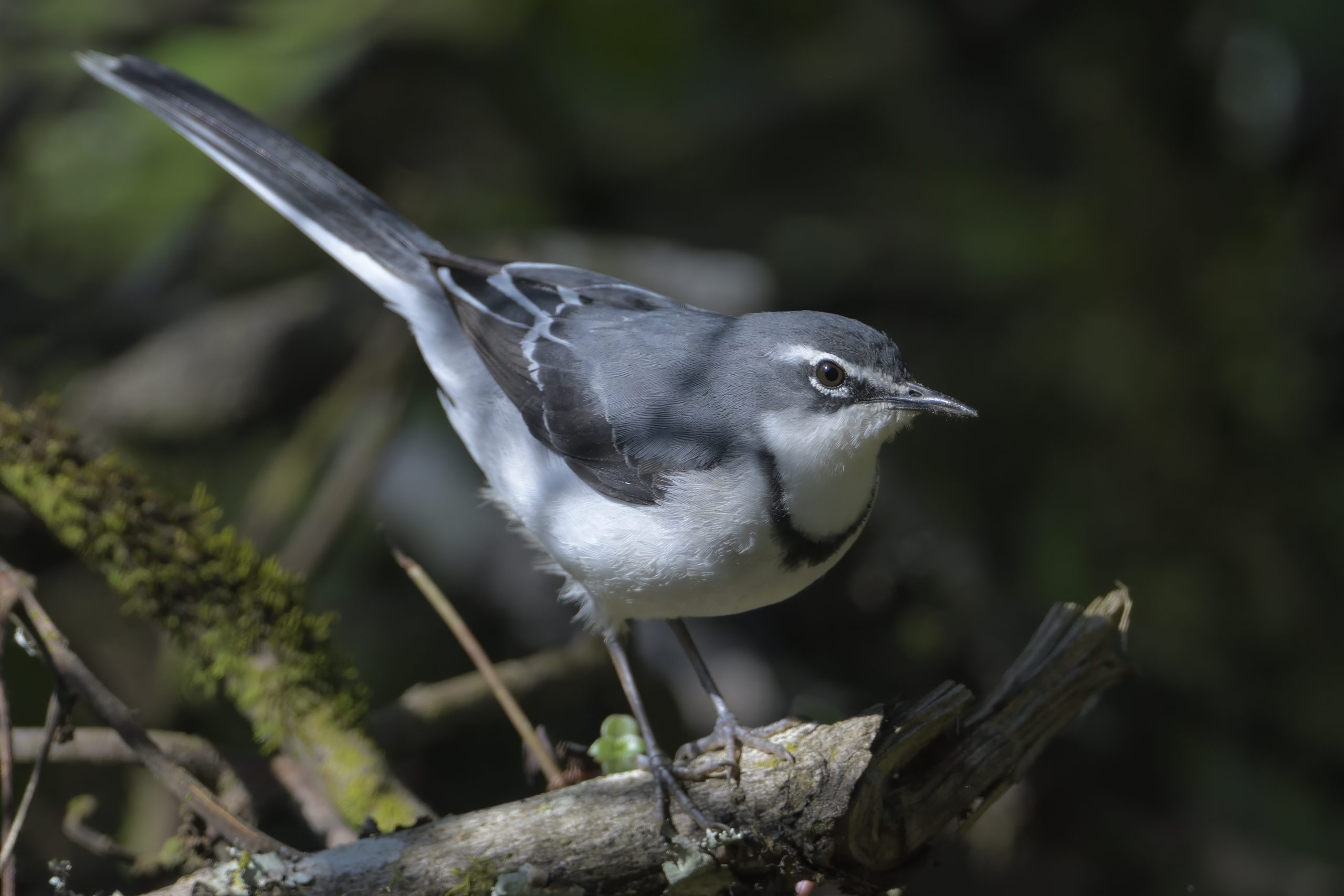
Mountain Wagtail, Motacilla clara

William´s Lark, Mirafra williamsi, Endemic to Kenya
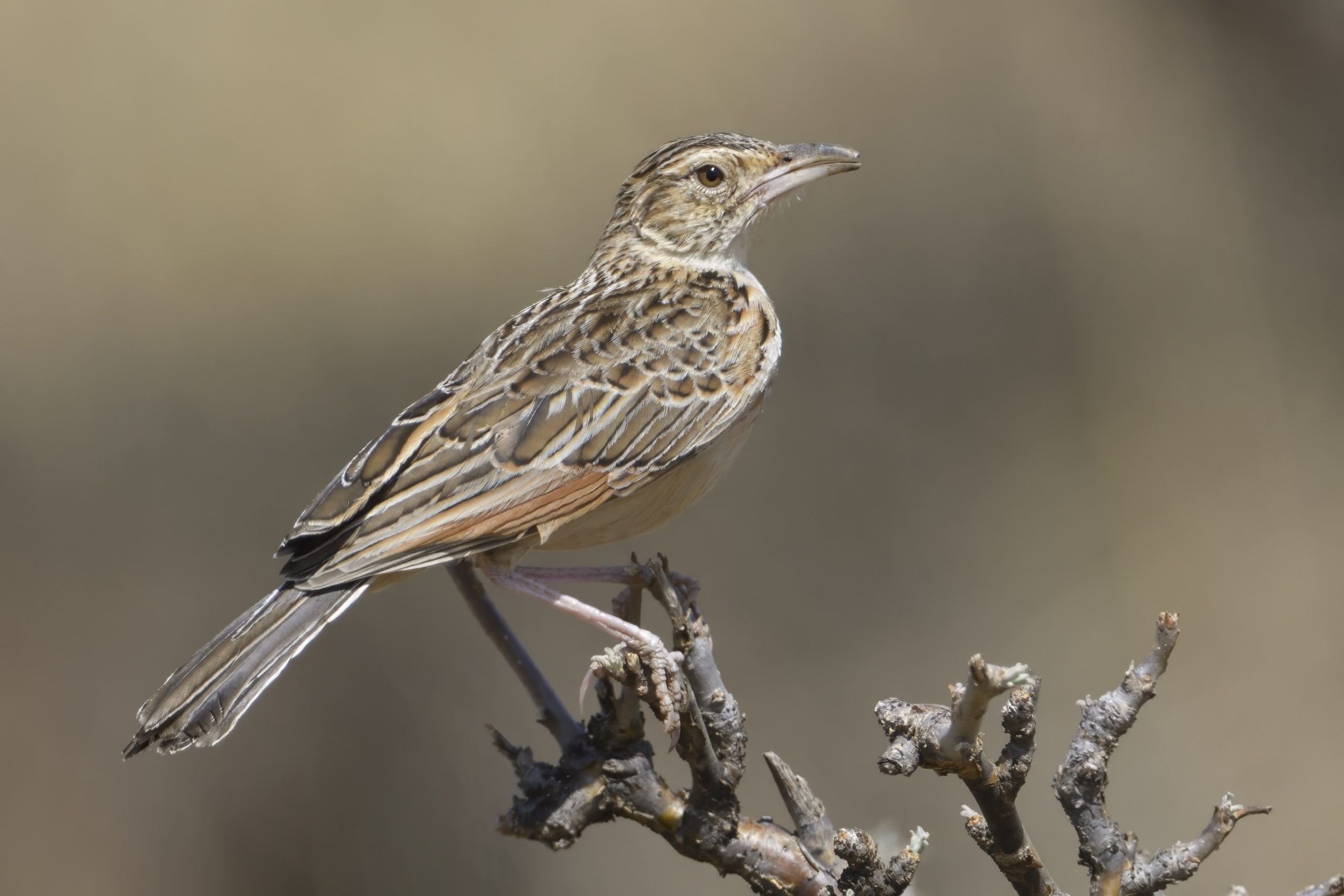
Red-winged Lark, Corypha hypermetra, Endemic to NE Africa

Brown-tailed Apalis, Apalis flavocincta, Endemic to NE Africa

Eastern Chanting Goshawk, Melierax polioperus, Endemic to NE Africa

Lapett-faced Vulture, Torgos tracheliotos

Vultutine Guineafowl, Acryllium vulturinum
Day 10: Friday, October 11: Samburu to Isiolo
We were at the gate at 06:00 and started ticking birds: White-headed Mousebird, Parrot-billed Sparrow, Yellow-spotted Bush Sparrow, Pale Prinia, Rosy-patched Bushshrike, Black-throated Barbet, Somali Ostrich, Grey Wren-Warbler, White-bellied Canary, White-headed Vulture, Yellow-vented Eremoella, Abyssinian Scimitarbill, Somali Crombec (LIFER), Golden-breasted Starling, Purple Roller, Pied Wheatear, Somali Bunting, Willow Warbler and Hamerkop. We reached the gate and stopped at the nearby village for the Norwegian and the guide to look for Somali Sparrow. Not Peter´s and my type of birding. so we stayed in the car. We were soon on our way and we had not driven far before I again had some problems with the car. We made it to Isiola and got the car fixed.
Some pictures from Day 10:

Yellow-vented Eremomella, Eremomella flavicrissalis, Endemic to NE Africa

Secretarybird, Sagitarrius serpentarius

Donaldson Smith´s Sparrow-Weaver, Plocepasser donaldsoni, Endemic to NE Africa

White-billed Buffalo Weaver, Dinemellia dinemelli, Endemic to NE Africa

Speckle-fronted Weaver, Sporopipes frontalis

Black-capped Social Weaver, Pseudonigrita cabanisi, Endemic to NE Africa

Northern Red-billed Hornbill, Tockus erythrorhynchus

Grant´s Gaselle, Nanger granti
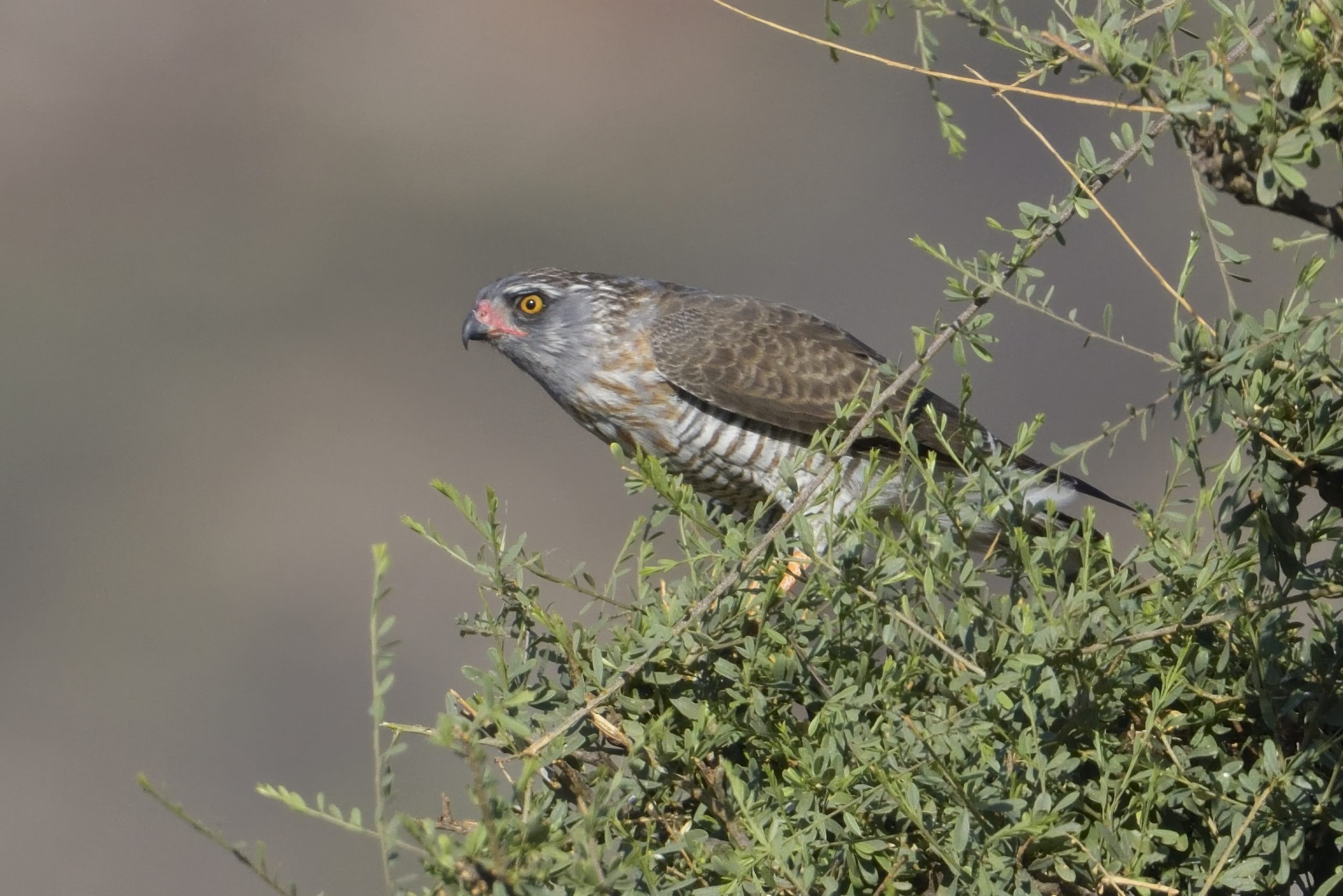
Gabar Goshawk, Micronisus gabar

Eastern Chanting Goshawk (Juvenile), Meliarax poliopterus, Endemic to NE Africa

Black-winged Kite, Elanus caeruleus
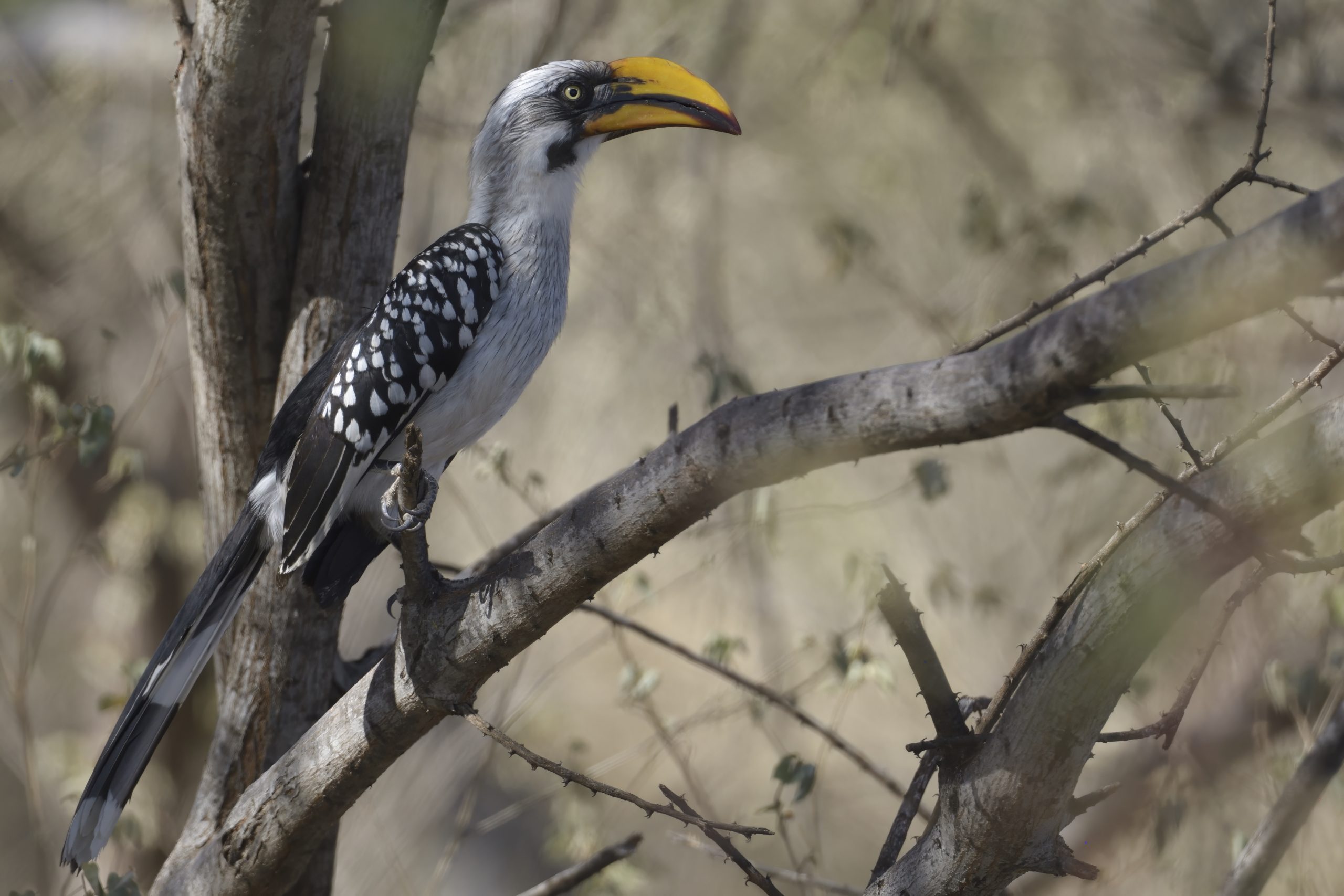
Eastern Yellow-billed Hornbill, Tockus flavirostris, Endemic to NE Africa
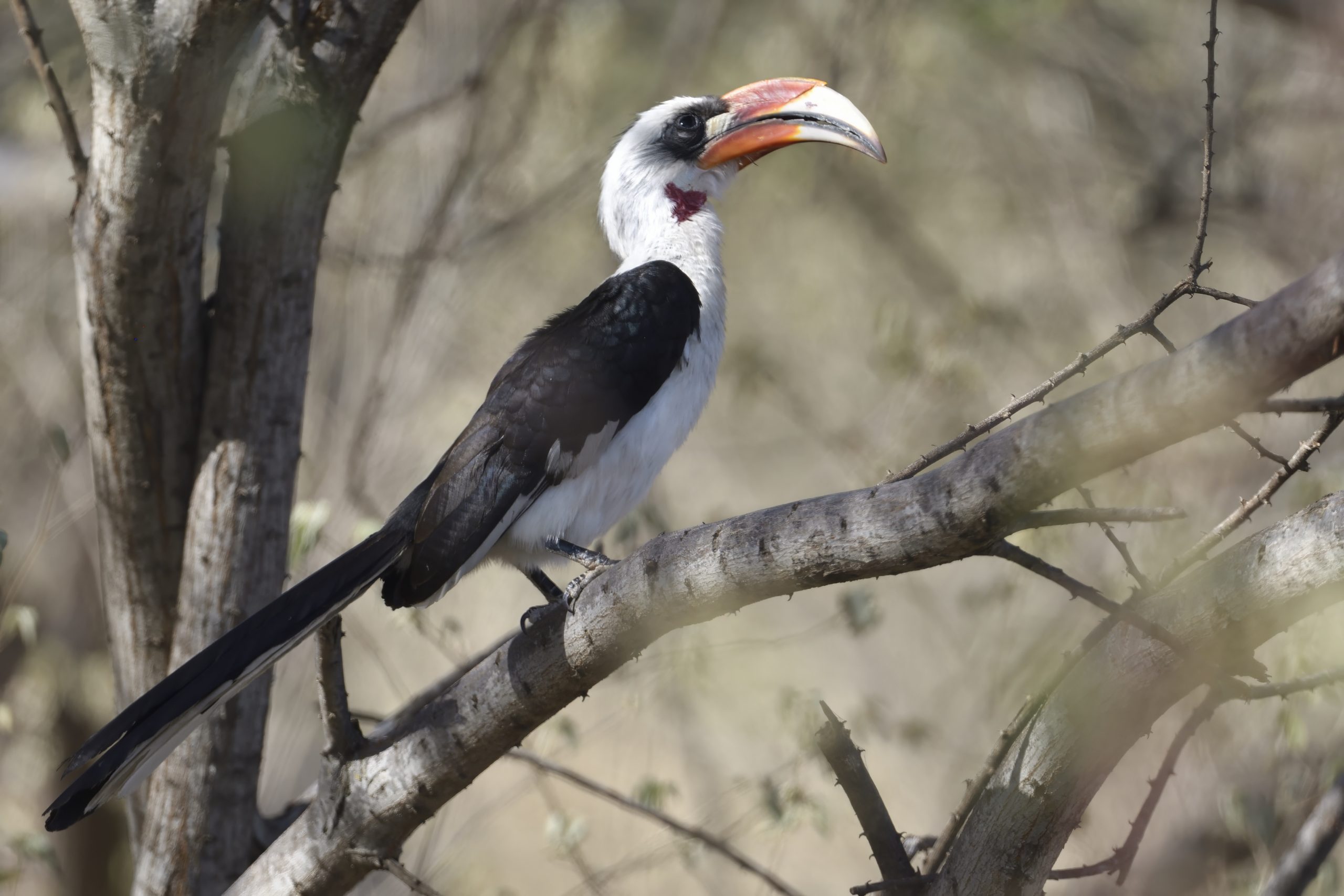
Von der Decken´s Hornbill, Tockus deckeni, Endemic to NE Africa

Somali Crombec, Sylvietta isabellina, Endemic to NE Africa – LIFER

Purple Roller, Coracias naevius

Von der Decken´s Hornbill (Female), Tockus deckeni, Endemic to NE Africa
Day 11, Saturday, October 12: Isiolo to Lake Baringo via Naro Moro
We had an early start and stopped at a few places just south of Isiola. Here are some of the birds we recorded: Red-winged Starling, Boran Cisticola, Little Rock Thrush, Yellow-crowned Canary, Anteater Chat, Chestnut Weaver, African Hoopoe, Yellow-crowned Bishop, Grey-crowned Crane, Cape Wagtail and Lesser Swamp Warbler. We continued to Naro Moro and started birding just west of the city. Here are some of the birds we found: Hooded Vulture, Red-capped Lark, Pectoral-patched Cisticola, Lanner Falcon and African Black Swift. We stopped at the Mackinder (Cape) Eagle-Owl spot, but to our surprise the birds had been unwittingly posiened by local farmers. We continued and stopped for the colony of Fischer´s Lovebird (Hybrid). Then at a wetland from long distance, we added Black Stork, White-faced Whistling Duck, Little Grebe, Red-billed Teal, Spur-winged Goose, Woodland Kingfisher, Yellow-billed Stork, Knob-billed Duck and Beatiful Sunbird. We reached Marigat and stopped for the breeding colony of White-billed Buffalo Weavers. We reached our normal lodging at Sandai Resort. We managed to do a little bit of birding before we had a short trip to the cliff face. In the garden we found Bristle-crowned Starling, Northern Masked Weaver, Beautful Sunbird and Speckled Pigeon. We went to the cliff face and my Norwegian friend only needed one bird. I walked in front and flushed a lot of common birds. He got raging mad. I told him, I will find your target bird! I stopped at my normal spot and we had both a male and female Jackson´s Hornbill fly in allowing for good pictures. That shut the old Norwegian up. I left him and walked back to the car and picked up Mocking Cliff Chat, Fan-tailed Raven and Hemprich´s Hornbill before the others arrived. We returnded to Sandai, freshened up and had a nice meal.
Some pictures from Day 11:
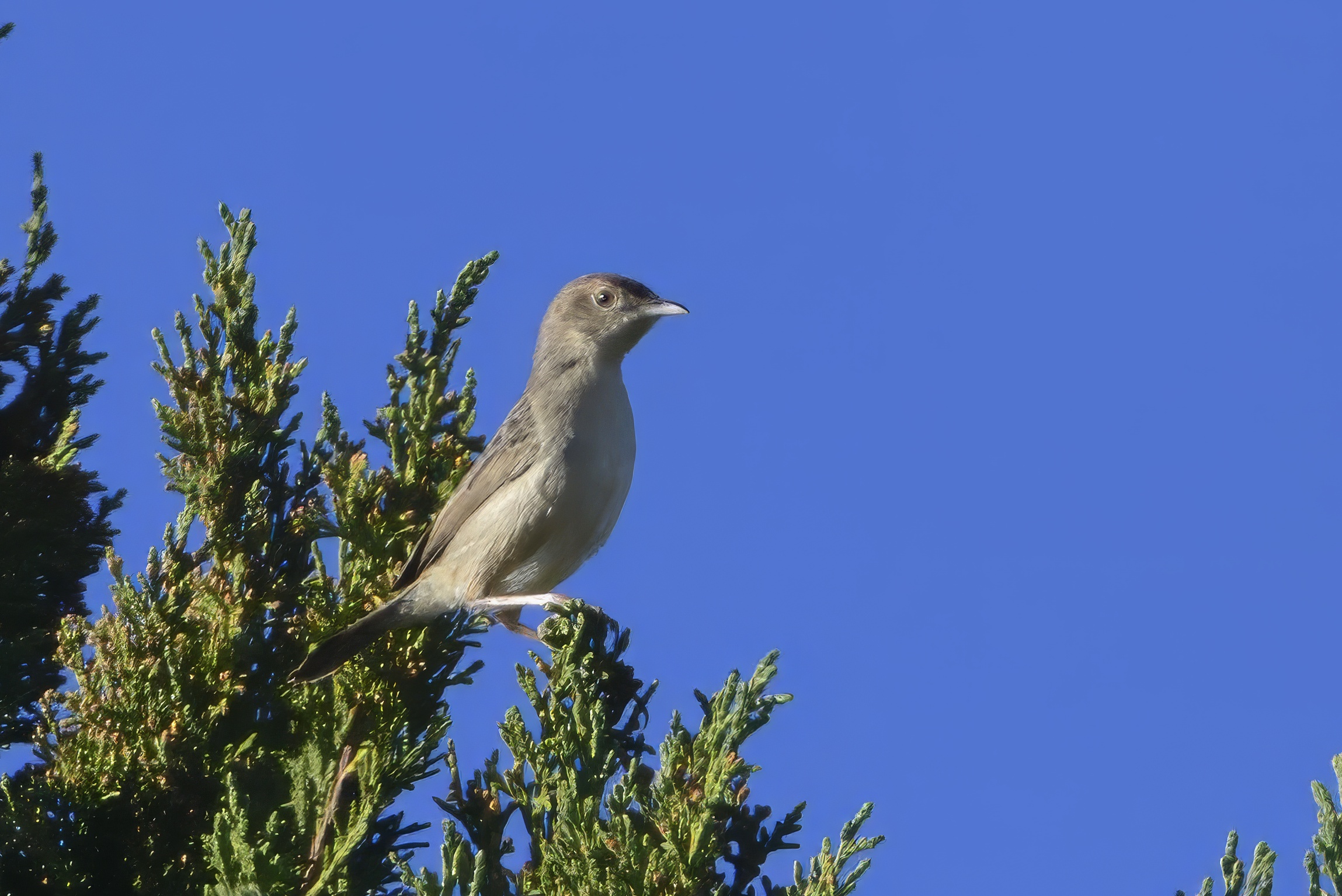
Boran Cisticola, Cisticola bodessa, Endemic to NE Africa

Little Rock Thrush, Monticola rufocinereus, Endemic to NE Africa

Bronze Mannikin, Spermestes cucculata

Grey-crowned Crane, Balearica regulorum

Lesser Swamp Warbler, Acrocepalus gracilirostris
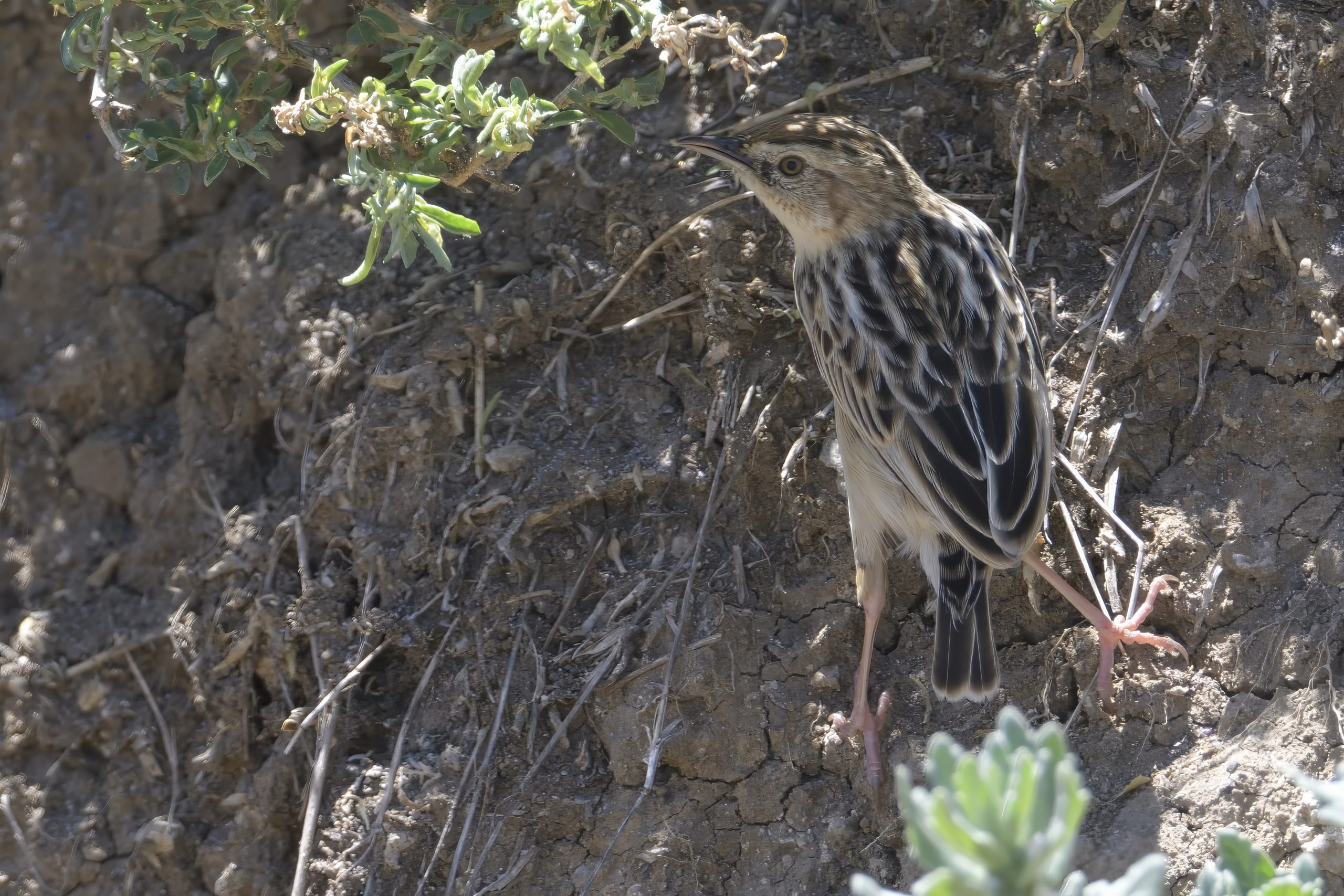
Pectoral-patched Cisticola, Cisticola brunnescens

White-billed Buffalo Weaver, Bubalornis albirostris

Bristle-crowned Starling, Onychognathus salvadorii, Endemic to NE Africa

Jackson´s Hornbill (Female), Tockus jacksoni, Localised Endemic to East Africa
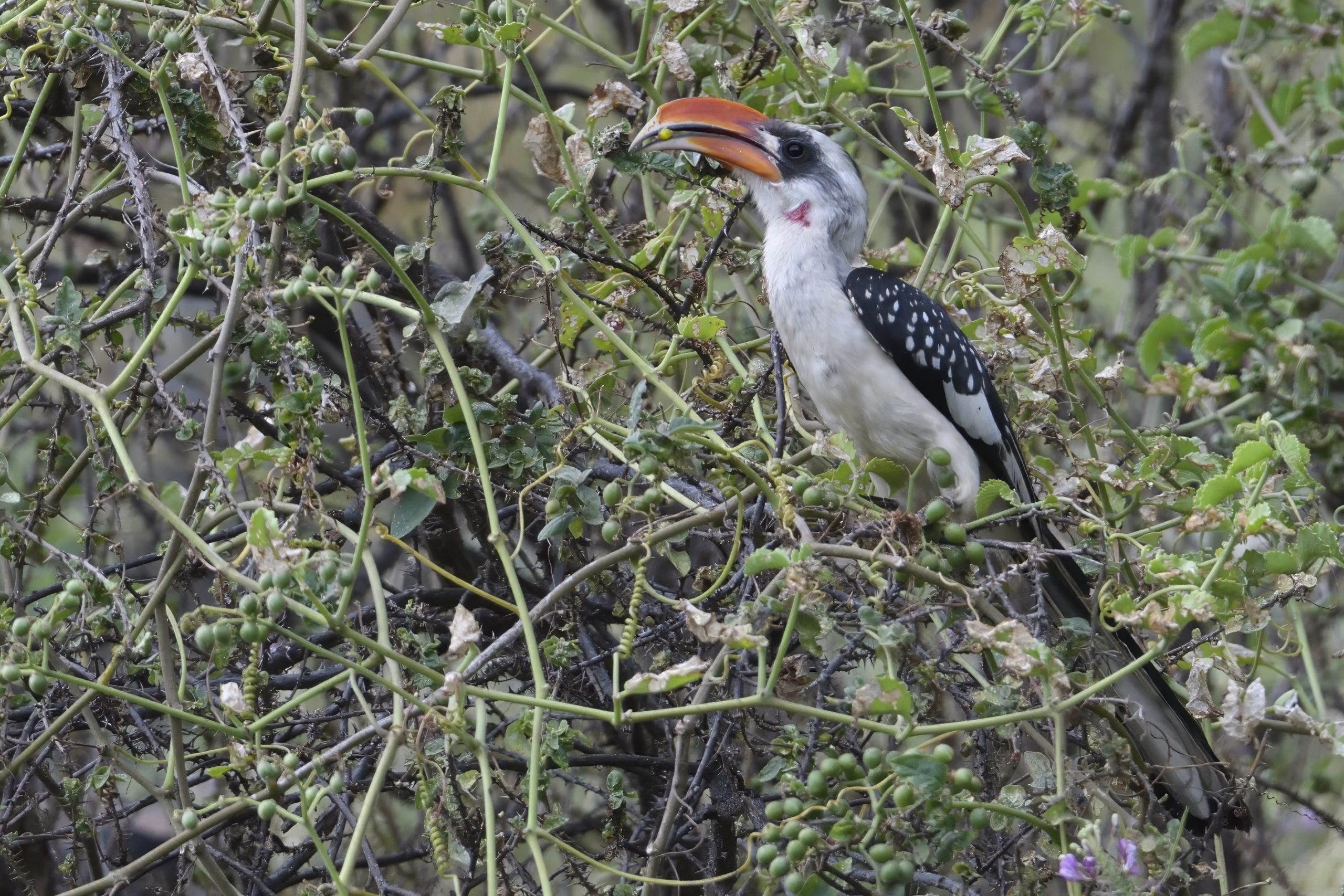
Jackson´s Hornbill, Tockus jacksoni, Localised Endemic to East Africa

Fan-tailed Raven, Corvus rhipidurus

Hemrich´s Hornbill, Lophoceros hemprichii, Endemic to NE Africa
Day 12, Sunday, October 13: Lake Baringo to Kakamega Forest.
The Norwegian decided to stay at Sandai that morning, so Peter, the guide and me went to the cliff face. Here are some of the birds we encountered: Brown-tailed Rock Chat, Little Weaver, Spotted Palm Thrush, Spot-flanked Barbet and Acacia Tit. We went back to Sandai, packed and were soon on our long journey to Kakamega Forest. Here are some of the birds we registered the first afternoon in Kakamega: Least Honeyguide, Joyful Greenbul, White-chinned Prinia, Lühder´s Bushshrike, Olive-bellied Sunbird, Chubb´s Cisticola, Cabanis´s Greenbul, White-headed Saw-wing, Black-and-white Casqued Hornbill, Little Greenbul, Sharpe´s Drongo, Black Cuckoo, African Thrush and Brown-capped Weaver. We returned to Smith´s Camp and had a nice dinner.
Some pictures from Day 12:

Brown-tailed Rock Chat, Oenanthe scorocerca

Little Weaver, Ploceus luteolus

Spot-flanked Barbet, Tricholaema lacrymosa, Endemic to East Africa

Chubb´s Cisticola, Cisticola chubbi
Day 13, Monday, October 14: Kakamega Forest
We started birding at my favourite spot in Kakamega. Here are some of the birds we registered before Breakfast: Mountain Illadopsis, Brown Illadopsis, Uganda Woodland Warbler, Blue-shouldered Robin-Chat, Buff-throated Apalis, Red-headed Malimbe, Kakamega Greenbul, Yellow-spotted Greenbul, Cabanis´s Greenbul, Brown-throated Wattle-eye, Turner´s Eremomela, Scaly-breasted Illadopsis, Yellow-spotted Barbet, Green-headed Sunbird, Red-headed Bluebill, Equatorial Akalat, Yellow-bellied Wattle-eye and Black-faced Rufous Warbler. We had breakfast and went out again. Here are some of the birds we added: Olive-green Camaroptera, Toro Olive Greenbul, Yellow-whiskered Greenbul, Grey-throated Barbet and Slender-billed Greenbul. After lunch we added only two species: Green-throated Sunbird and Chestnut Wattle-eye.
We returned to camp, freshened up and had dinner.
Some pictures from Day 13:

Cabanis´s Greenbul, Phyllastrephus cabanisi

Kakamega Greenbul, Arizelocichla kakamegae, Endemic to Albertine Rift and W Kenya

Yellow-spotted Barbet, Buccanodon duchailui

Equatorial Akalat, Sheppardia aequatorialis, Endemic to E Africa

Lühder´s Bushshrike, Laniarius luehderi

Olive Green Camaroptera, Camaroptera chloronata
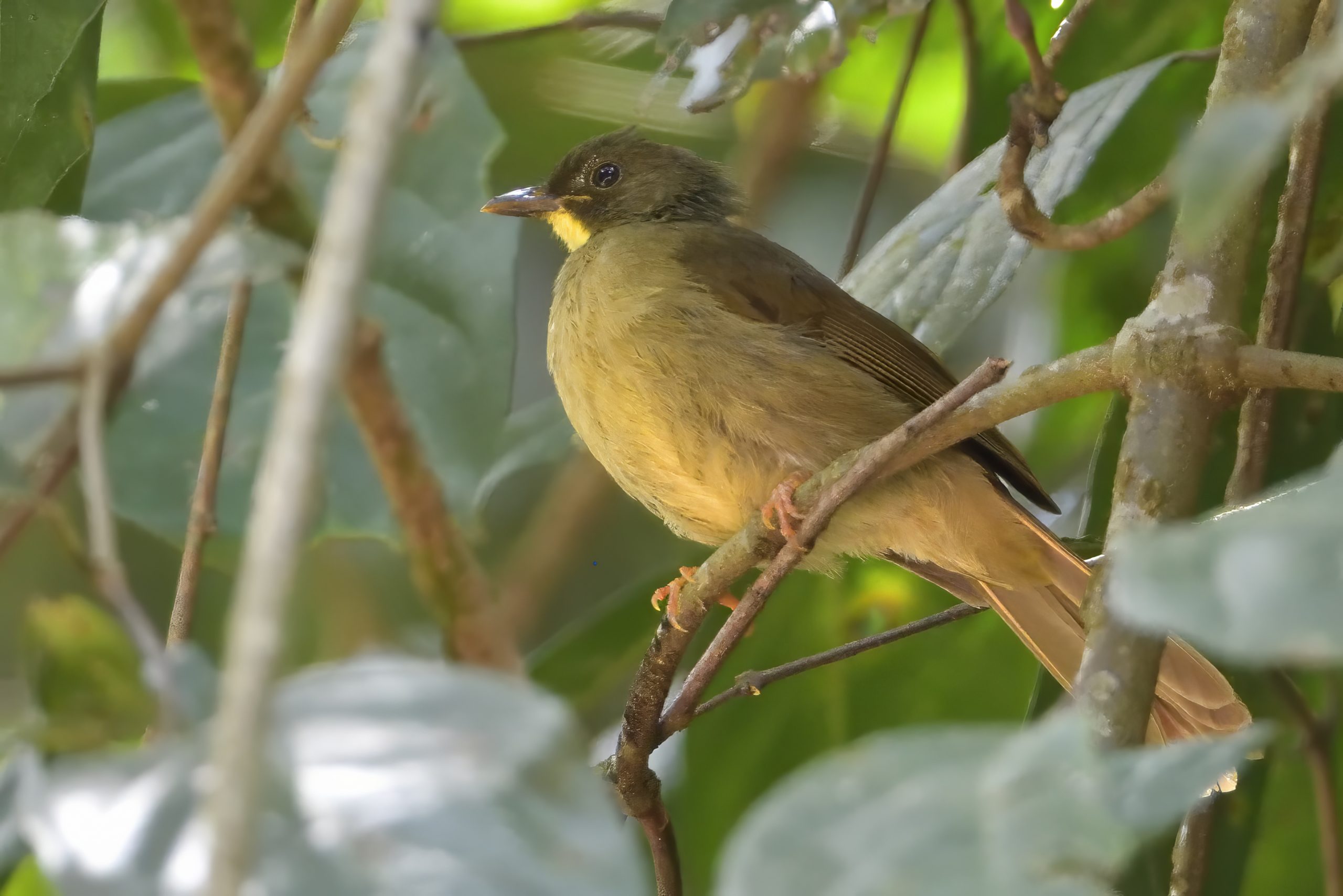
Yellow-whiskered Greenbul, Eurillas latirostris

Uganda Woodland Warbler, Phylloscopus budongoensis

Black-faced Rufous Warbler (Female), Bathmocercus rufus

Black-faced Rufous Warbler, Bathmocercus rufus

Chestnut Wattle-eye (Female), Platysteira castanea

Chestnut Wattle-eye, Platysteira castanea
Day 14, Tuesday, October 15: Kakamega Forest to Aberdere National Park
Our last morning in Kakamega (I normally do 3 full days on my regular trips). Here are some of the birds we found on our morning walk: Chapin´s Flycatcher, Yellow-billed Barbet, Great Blue Turaco, White-tailed Ant Thrush, Grey-chested Babbler (LIFER). The last bird created a lot of controversy between the recorder and the photographer. It was singing beautiful and Peter got excellent recordings, but I know this bird as a real skulker so there were no way we could get it out. Luckily I managed to see it. I told the old Norwegian that this bird you are lucky to see, but he insisted that we try to play it back. I knew it would not come out, still he insisted and created a general bad mood in the group. Other birds: Joyful Greenbul, Petit´s Cuckooshrike, African Thrush, Brown-chested Alethe, Tambourine Dove, Dark-backed Weaver, Brown-throated Wattle-eye and African Goshawk. It was time for the long drive to Aberdere, we got there late and were only at the gate at 17:00. We quickly ticked Moorland Chat and Jacksons Spurfowl. We had to go a little deeper in the park to get the Aberdere Cisticola. In the middle of the park, the alternator of my car decided to give up, so we were stuck and managed to call for help to get us to our hotel. I arranged for another car the day after so the boys would not miss the remaining birds.
Some pictures from Day 15:

Grey-throated Barbet, Gymnobucco bonapartei

White-tailed Ant Thrush, Neocossyphus poensis

Eastern Yellow-billed Barbet, Trachyphonus purpuratus

Tambourine Dove, Turtur tympanistra

Brown-chested Alethe, Chamaetylas poliocephala

Brown-throated Wattle-eye, Platysteira cyanea

Dark-backed Weaver, Ploceus bicolor

Jackson´s Spurfowl, Pternistis jacksoni, Endemic to Kenya
Day 15, Wednesday, October 16: Kinangop vis Lake Naivasha to Nairobi.
A friend of mine came and picked up my friends to find the Sharpe´s Longclaw and Grey-crested Helmetshrike, while I took the car to the garage to get it fixed. I did manage to get a picture of a Bronze Sunbird while the car were being fixed. My friends succeeded in finding both their target species and i met them in Naivasha. We drove to Nairobi where I finally dropped off the grumpy old Norwegian. He did not even give a cent in tip to the guide that managed to get him 51 lifers out of an expected 40. I had already called a friend in Nairobi that have a garage. I had to change the rear shock absorbers plus some other repairs and we spent the night at hotel Troy.
One picture from Day 16

Bronze Sunbird (Female), Nectarina kilimensis
Day 16, Thursday, October 17: Nairobi to Tausa Eco Lodge near Voi,
Then we were 3 and peace on the trip were restored. We started early from Nairobi and reached the lodge around 13:00. We had lunch and then went birding. I left my guide with Peter and explored the area myself. Here are some of the birds I recorded that day: Red-bellied Parrot, Cut-throat Finch, Dodson´s Bulbul, Grey Wren-Warbler, Pygmy Batis, Black-throated Barbet, Isabelline Wheatear, White-browed Scrub Robin, Red-and-yellow Barbet, Red-naped Bushshrike, Spotted Palm Thrush, D´Arnaud´s Barbet, Tawny Eagle, Yellow-spotted Bush Sparrow, Chestnut Weaver, Tsavo Sunbird, Hunter´s Sunbird, Bare-eyed Thrush, Blue-naped Mousebird and Common Buttonquail. We had dinner and retired early to bed.
Some pictures from day 16:
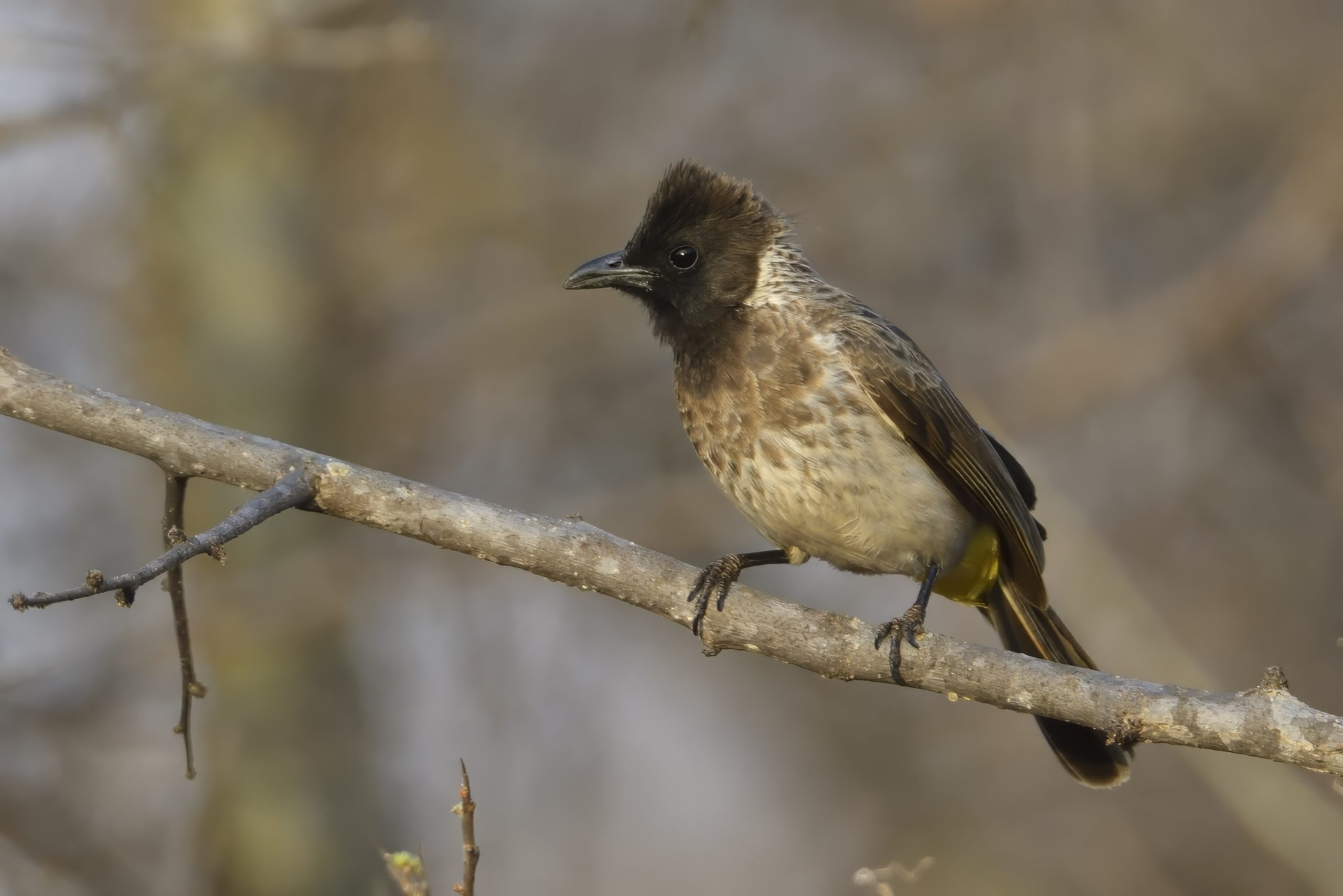
Dodson´s Bulbul, Pycnonotus dodsoni, Endemic to NE Africa

Red-naped Bushshrike, Laniarius ruficeps, Endemic to NE Africa

White-browed Scrub Robin, Cercotrichas leucophrys

Hunter´s Sunbird, Chalcomitra hunteri, Endemic to NE Africa

Bare-eyed Thrush, Turdus tephronotus, Endemic to NE Africa

Chestnut Weaver, Ploceus rubiginosus
Day 17, Friday October 18: Tausa Eco Lodge to Taita Hills
We started birding in the morning at Tausa and here are some of the species we added: Red-fronted Prinia, Somali Bunting, Red-cheeked Cordon-bleu and Von der Decken´s Hornbill. We had breakfast at the lodge. Both Peter ad I agreed that the Tausa Eco Lodge is heavily overpriced and the service is not up to standards with the price we were paying. I normally stay in Voi and do the 14 km drive north, but the birding there is great with the trophy bird of course being the Red-naped Bushshrike. After Breakfast, we started our drive to Taita Hills. I have been there so many times and have good pictures of all the endemic birds besides recording and bird photography does not necessary go that good together. I decided that Peter would go alone with my local guide Nathaniel and I will just have some relaxing days doing my own birding. Here are some of the birds I recorded the first afternoon: Crowned Eagle, Black Sparrowhawk, Taita White-eye, Taita Thrush and Evergreen Forest Warbler. Peter and Nathaniel went to the spot for the Taita Apalis and Peter got very good recording of all the 3 Endemics. We met for dinner and retired early.
Some pictures from Day 17:

Somali Bunting, Emberiza poliopleura, Endemic to NE Africa

Red-cheeked Cordon-bleu, Uraeginthus bengalus

Red-fronted Prinia, Prinia rufifrons

Yellow-spotted Bush Sparrow, Gymnoris pyrgita

Hunter´s Sunbird (Juvenile), Chalcomitra hunteri, Endemic to NE Africa

Tsavo Sunbird, Cinnyris tsavoensis, Endemic to E Africa

Long-tailed Paradise Whydah (Non breeding), Vidua paradisaea

A relaxing bird walk in Taita Hills.
Day 18, October 19: Taita Hills to Mida Eco Lodge.
I did my own bird walk in the morning. I found a pair of Usambara Double-collared Sunbirds (They used to be endemic to TZ, but apparantly not anymore). Other birds recorded included: Yellow-throated Woodland Warbler, Olive-headed (Stripe-faced) Greenbul, White-starred Robin, Singing Cisticola, Silvery-cheeked Hornbill and Cape Robin-Chat. We arrived in Mida Creek and went into Arabuko Sokoke Forest, but did not add any new species.
No pictures from Day 18.
Day 19, October 20: Mida Creek
Peter and the guide went back to Arabuko Sokoke, while I spent the day around camp and took a stroll at Mida creek when the tide were right. Here are some of the birds I added: Pied Kingfisher, Eurasian Curlew, White-winged Tern, Green-backed Camaroptera and Tibetan (Lesser) Sand Plover.
We had dinner and retired again early to bed.
Some pictures from Day 19:

Eurasian curlew, Numenius arquata

Dimorphic Egret, Egretta dimorpha

Waiting for the tide to be right.

African Woolly-necked Stork, Ciconia microscelis

White-winged Tern, Chlidonias leucopterus
Day 20, October 21: Mida Creek, Kenya to Kiligolf, Tanzania.
The last few days, I had let Peter and the guide into the forest alone while I again had been fixing my car. I had rented a car for them for the last few days. Although Peter was only flying out on the 22nd, I decided as soon as my car was fixed to start the long journey home. The journey went very smooth, but it is still almost 450Km + a border crossing. I arrived safely home before dark.
We recorded a total of 535 species on the trip. I did learn a valuable lesson: Never mix a bird recorder with a bird photographer. Last time Peter was with me in 2019, he had a friend and they had travelled together before so the trip went smoothly. The same with my Norwegian friend, but this time things did not go well. I expected my Norwegian friend to get 40 lifers and at last count he ended up with 51. He refused to pay me a huge amount of money that he owes. On the other hand, Peter was very happy with the trip and got more lifer recordings than expected. The other important lesson is that 2 days between trips are not enough. I need at least a week to get my car(s) properly serviced.
In the mean time, I have done 2 standard Usambara trips that i still need to write trips reports for, so stay tuned. I got 3 lifers on this trip. In East Africa, I have now seen 1146 species and I have picture of 1101 of them.